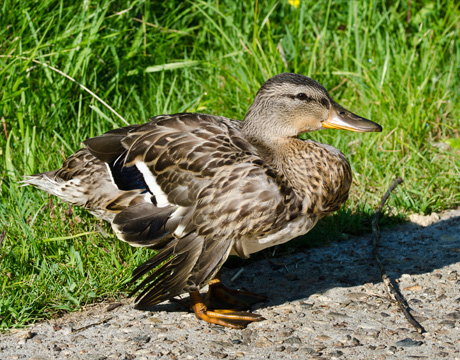Occasionally, you may encounter an injured animal. Perhaps it's a bird that has flown into a window or become tangled in fishing line. You might come across a deer or a raccoon that has been injured by a passing car. Remember, human presence stresses wildlife. For your safety and the sake of the injured animal, tryto eliminate stressors and alleviate shock. Following are ways to assess a situation and steps to take if action is needed.
Even though it may be tempting to take an animal and nurse it back to health, please remember that there are many federal and state laws against keeping wildlife. Learn more »
Federal and state laws prohibit you from keeping most native animals, even if you're temporarily caring for it with the intent of releasing it. Wildlife rehabilitators and care centers maintain licenses to hold and treat injured wildlife.
Not only is it illegal, but wild animals do not make good household pets and captivity poses a constant stress to them. Just as children need their parents’ nurturing, so do young wild animals. Wild animals raised in captivity will fail to develop survival skills and fear of humans, essentially eliminating any hope for future return to their native habitat.

Who to Call
Your personal safety is the first thing to consider when assessing an injured wildlife situation. It is instinctual for animals to fear humans. Even though they might be injured, they will react to that fear. The situation worsens if you are injured by an animal's beak, teeth or claws.
When assessing an injured wildlife situation, call a wildlife rehabilitator or care center for advice. Rehabilitators know the needs of different species. They are trained to properly observe an animal's behavior and appearance, allowing them to determine whether an animal is acting normally or having a problem. Rehabilitators are also certified to administer medications if needed and will provide the best possible care available for our wildlife neighbors. The best course of action is to place an injured animal with a trained, experienced and licensed rehabilitator.
-

Lake County Nature Blog
Connect with seasonal nature observations on our Nature Blog »